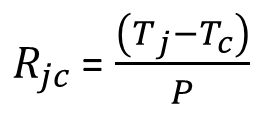The Electronics Cooling Metaphorical Drinking Game – Part Deux
With Semi-Therm 31 just a week away I thought it would be a good time to expand on the (metaphorical) electronics cooling drinking game. Something extra to add to your enjoyment of a conference presentation, journal paper and especially a press release. Common electronics cooling industry drivers and concepts crop up again and again (well, they would do, they’re common), see if you can spot any of these next time you’re reading an article or listening to a presentation.
“What do points make? Prizes!” See how many you can score at Semi-Therm…
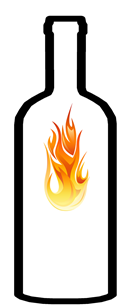 Thermal Bottleneck. Analogies are great for transposing a reason into a readily understandable form. Thermal management is essentially the management of the transport of heat energy through a series of geometric obstructions. It’s when a lot of heat finds it difficult to escape to a cold ambient do the (‘upstream’) temperatures start to rise sharply. These thermal bottlenecks are often mentioned, especially in the context of TIM1 and TIM2. Actually we quantified this bottleneck concept into something that can be simulated and displayed. Always an interesting concept, 3 points.
Thermal Bottleneck. Analogies are great for transposing a reason into a readily understandable form. Thermal management is essentially the management of the transport of heat energy through a series of geometric obstructions. It’s when a lot of heat finds it difficult to escape to a cold ambient do the (‘upstream’) temperatures start to rise sharply. These thermal bottlenecks are often mentioned, especially in the context of TIM1 and TIM2. Actually we quantified this bottleneck concept into something that can be simulated and displayed. Always an interesting concept, 3 points.
.
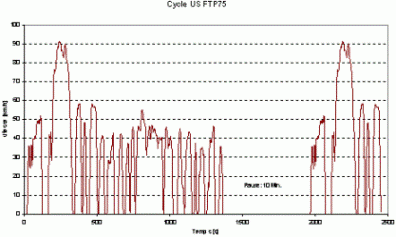 Driving/Mission/Scenario Profiles. With ever decreasing thermal design margins the assumption that a system behaves in a steady state way, with powers dissipated for so long that the system attains a constant thermal state, is becoming untenable. It is far more common today to study the transient thermal response of a system as a function of how it will be deployed in the field. Driving (auto), mission (mil/aero) and scenario (consumer) profiles provide an indication of how the power consumption will vary in time, allowing for the resulting transient junction, case and touch temperatures to be simulated more accurately (and less conservatively than when based on steady state power assumptions). Transient simulations are the future, 4 points.
Driving/Mission/Scenario Profiles. With ever decreasing thermal design margins the assumption that a system behaves in a steady state way, with powers dissipated for so long that the system attains a constant thermal state, is becoming untenable. It is far more common today to study the transient thermal response of a system as a function of how it will be deployed in the field. Driving (auto), mission (mil/aero) and scenario (consumer) profiles provide an indication of how the power consumption will vary in time, allowing for the resulting transient junction, case and touch temperatures to be simulated more accurately (and less conservatively than when based on steady state power assumptions). Transient simulations are the future, 4 points.
.
Junction to case resistance is arguably the most common thermal metric. It relates quantifies the ease by which heat can pass from its source (die) to the peripheral, heatsunk, hopefully constant temperature case of the package. It’s deceptively simple. There will always be outstanding questions regarding what and where the case temperature is, how to measure the junction temperature etc. Actually these questions are addressed in JESD51 series standards. Important point to note, these metrics are always intended for comparative purposes, not for simulation. It’s when applied for the latter do these questions start to arise. EC 101, 1 point.
.
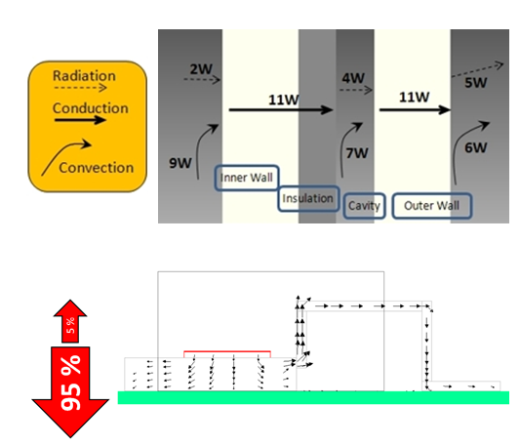 Heat Flux Budgets. Despite heat transfer being an inherent 3D affair, we often fold the heat flows down into simple, easy to explain, 1D type paths and networks. A lot of (superfluous) extra information is lost but this method of presentation is a per-requisite for convincing others of (thermally) required design changes. It can becoming an even more compelling approach when coupled with the concept of thermal bottlenecks (see above). EC 102, 2 points.
Heat Flux Budgets. Despite heat transfer being an inherent 3D affair, we often fold the heat flows down into simple, easy to explain, 1D type paths and networks. A lot of (superfluous) extra information is lost but this method of presentation is a per-requisite for convincing others of (thermally) required design changes. It can becoming an even more compelling approach when coupled with the concept of thermal bottlenecks (see above). EC 102, 2 points.
.
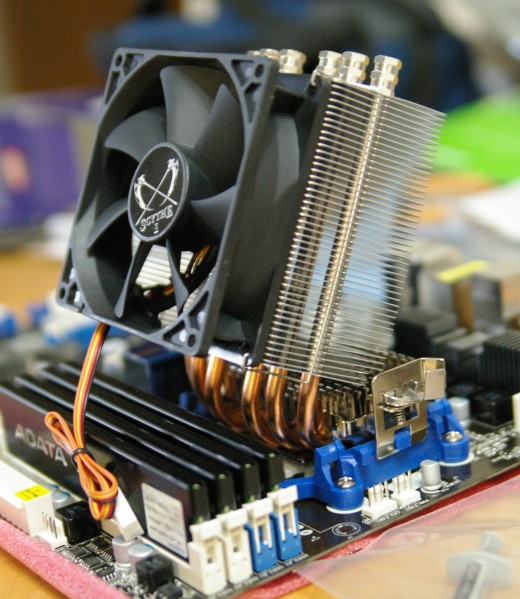 Heat pipes and Vapour chambers. No longer considered an exotic thermal management solution, these heat moving devices are now commonplace, especially in computing applications. Very good at taking heat from confined spaces and moving that heat, with little dT penalty, to larger areas when the heat may be transferred onwards using more standard area extending heatsink solutions. Here’s a really good compare/contrast blog on the subject from George Meyer at Celsia. They’re everywhere, 1 point.
Heat pipes and Vapour chambers. No longer considered an exotic thermal management solution, these heat moving devices are now commonplace, especially in computing applications. Very good at taking heat from confined spaces and moving that heat, with little dT penalty, to larger areas when the heat may be transferred onwards using more standard area extending heatsink solutions. Here’s a really good compare/contrast blog on the subject from George Meyer at Celsia. They’re everywhere, 1 point.
.
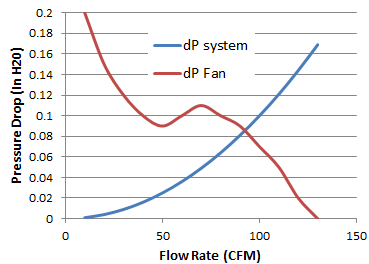 System operating point. When sizing fans or blowers it is critical to know what resistance to flow the system you are trying to ventilate, will offer. Only once this is known will you be able to determine how powerful a fan will be required, or what your derating strategy could be. Very much early stage design decision work achieved by matching the system’s flow resistance curve against that of a fan(s), the intersection being what flow rate would result. So common not often seen in conferences today, 1 point.
System operating point. When sizing fans or blowers it is critical to know what resistance to flow the system you are trying to ventilate, will offer. Only once this is known will you be able to determine how powerful a fan will be required, or what your derating strategy could be. Very much early stage design decision work achieved by matching the system’s flow resistance curve against that of a fan(s), the intersection being what flow rate would result. So common not often seen in conferences today, 1 point.
.
9th March 2015, Ross-on-Wye
